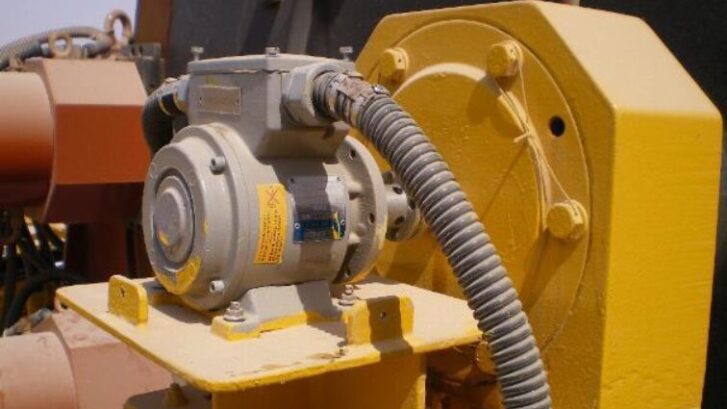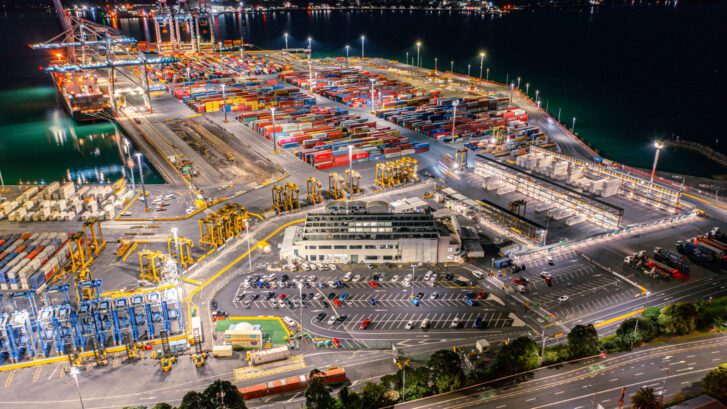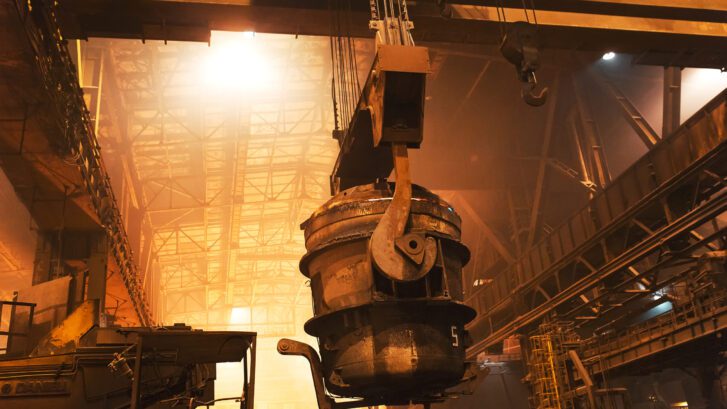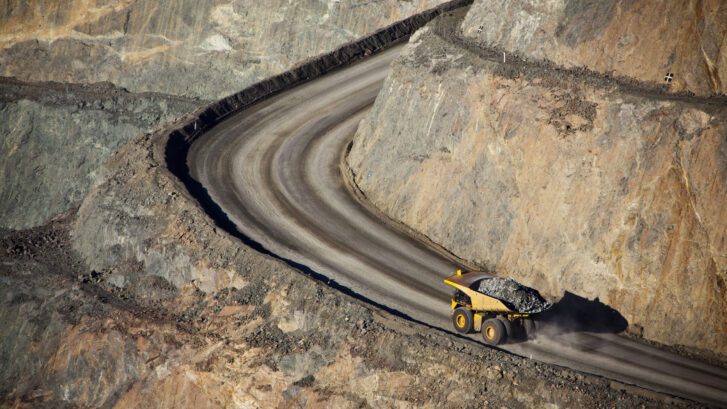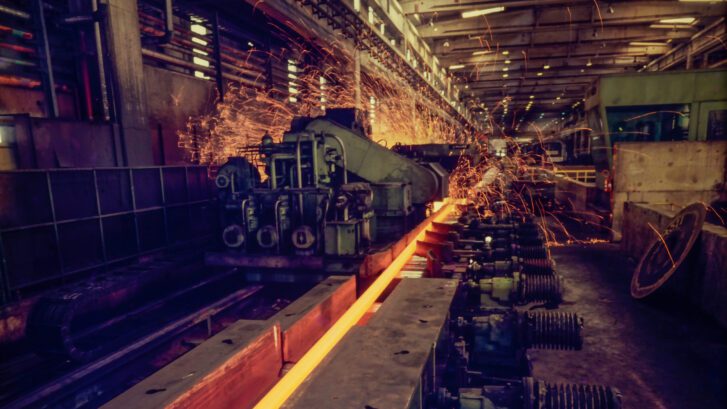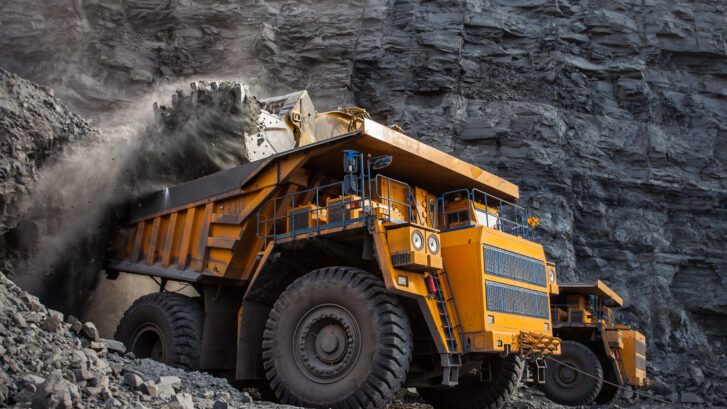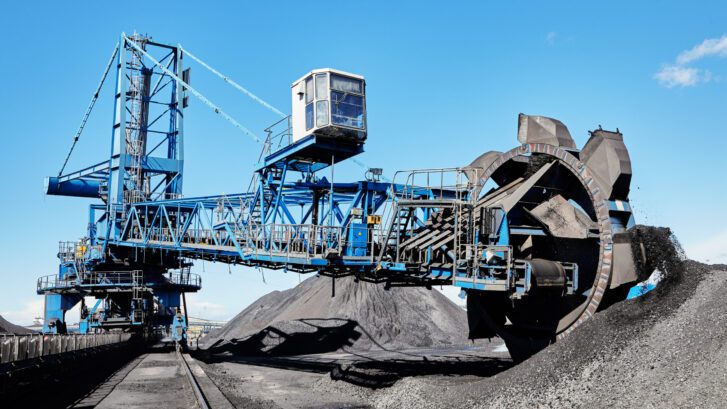STS Crane Upgrade -Hübner Giessen’s Unit-One Compact System
Understanding the Legacy Setup: Why It No Longer Works.
STS crane upgrade by Johannes Hübner Giessen
Historically, STS cranes operated with mechanical cam limit switches, basic electronic overspeed switches, and multiple mechanical couplings tied together through a distribution gear. At first glance, this might seem serviceable. However, several persistent issues arise:
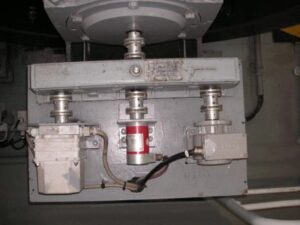
STS crane upgrade Unit-One (Before)
1. Obsolete Cam Limit Switches
Firstly, mechanical cam limit switches are prone to failure. These aging components are not only difficult to maintain but are also sensitive to environmental wear and tear. Consequently, crane reliability is compromised.
2. Manual Configuration and Reset
Secondly, mechanical switches require tedious manual configuration. If the system is altered or the limits need to be reset, technicians must physically adjust each component. This process is time-consuming and error-prone.
3. Too Many Mechanical Couplings
Additionally, having three separate mechanical couplings increases the chance of failure. Each coupling is a potential point of misalignment, and when combined, they create a maintenance nightmare.
4. Backlash and Inaccuracies
Moreover, the presence of a distribution gear introduces backlash. This slack in the mechanical system causes delays and imprecision, making accurate control difficult.
5. Multi-Vendor Complexity
Lastly, components from three or more different manufacturers make sourcing replacements and coordinating service a logistical challenge. Each vendor has its own lead times, compatibility standards, and documentation.
Clearly, this configuration is neither efficient nor future-ready.
Introducing the Hübner Giessen Solution: A Smarter Alternative
In contrast, the Unit-One Compact system from Hübner Giessen addresses all these issues head-on. Designed with modern industrial requirements in mind, it replaces mechanical complexity with digital simplicity.
The system comprises a single, foot-mounted basic unit—either incremental, absolute, or combined—installed directly onto the drum using one mechanical coupling. Moreover, switches are digitally backpacked, allowing for full configurability.
Let’s explore the advantages in more detail.
1. Streamlined Mechanical Design
First and foremost, reducing three mechanical couplings down to one significantly decreases the risk of misalignment. Likewise, eliminating the distribution gear removes a major source of mechanical backlash.
As a result, the system becomes more compact, reliable, and easier to maintain.
2. Flexible and Scalable Configuration
Another key benefit is the system’s customisability. Users can configure as many speed and position switches as required—without needing additional hardware. This is particularly valuable for port operators seeking scalable solutions.
Furthermore, adding or removing switches is as easy as updating the system software.
3. Rapid Setup and Digital Reconfiguration
Traditionally, changing a limit switch position required physical tools and shutdown time. With the Unit-One Compact system, however, setup and configuration are performed via laptop. Resetting is done with a single click.
Thus, commissioning time is reduced, and operational uptime is maximised.
4. Dual Signal Outputs for Greater Flexibility
Importantly, the system provides both incremental and absolute encoder signals. This allows it to serve multiple operational requirements simultaneously—speed monitoring, position control, and even redundancy planning.
Consequently, this reduces the need for additional encoders or sensors.
5. Enhanced Accuracy with Minimal Backlash
Due to the direct mounting and single coupling, the Unit-One Compact system virtually eliminates mechanical slack. This results in precise positional feedback and smoother crane movements.
For automated terminals and safety-critical operations, this level of precision is vital.
6. Improved Safety Through Programmable Limits
Additionally, safety is significantly enhanced. The system allows for programmable speed and position limits, including dedicated maintenance zones. These zones can enforce speed reductions or travel restrictions during service.
Therefore, risks to maintenance personnel are significantly reduced.
7. Simplified Maintenance Planning
Because the system has fewer moving parts, there is less wear and tear. This naturally extends maintenance intervals and lowers overall upkeep costs.
Moreover, programmable alerts and diagnostics allow for proactive service planning—minimising unexpected failures.
8. Single Vendor Integration
Instead of managing parts from three or more vendors, operators now have a complete solution from one source. This simplifies procurement, training, and technical support.
Additionally, unified documentation and consistent service standards reduce downtime and confusion.
9. Proven Global Adoption
It’s worth noting that over 1,000 cranes worldwide have been modernised using the Unit-One system. Many of these installations are in leading international container terminals.
This widespread adoption speaks volumes. Ports wouldn’t standardise on this system unless it delivered measurable results. In fact, many have reported increased availability, reduced maintenance time, and improved safety metrics.
10. Future-Proofing Your Equipment
Modernising with Unit-One Compact doesn’t just solve today’s problems—it prepares your operation for tomorrow. Whether your terminal plans to move toward semi-automation, digital diagnostics, or predictive maintenance, this system is a solid foundation.
In essence, it transforms a reactive, mechanical process into a forward-thinking digital solution.
Comparing Before and After
Let’s break it down:
| Feature | Old System | Unit-One Compact |
|---|---|---|
| Mechanical Couplings | 3 | 1 |
| Distribution Gear | Required | Not Needed |
| Position Feedback | Manual Cam Switch | Digital, Programmable |
| Configuration | Manual | Software-based |
| Maintenance Effort | High | Low |
| Vendors | 3+ | 1 |
| Accuracy | Moderate | High |
| Safety Zones | Not Customisable | Programmable |
Clearly, the shift isn’t just an upgrade—it’s a complete evolution. The STS crane upgrade Unit-One drastically reduces failure points while improving alignment accuracy.
Environmental Benefits of Digital Modernisation
In today’s ESG-driven world, every upgrade must also consider environmental impact. Fortunately, modernising with Unit-One Compact helps in several ways:
- Fewer mechanical parts mean less waste
- Reduced lubricant use lowers water and soil contamination risk
- Less downtime means less idling equipment and lower emissions
These small efficiencies add up, especially across an entire crane fleet.
Financial Justification: Does It Pay Off?
Yes, and faster than you might expect. By reducing downtime, maintenance labour, and component failures, the system pays for itself in:
- Lower repair costs
- Improved throughput
- Reduced spare part inventory
- Fewer accidents and insurance claims
Add to that the extended lifecycle of the crane components and the business case becomes very compelling.
Final Thoughts: A Smarter, Safer, More Efficient Crane
Ports and terminal operators are under increasing pressure to modernise. Whether it’s to improve safety, prepare for automation, or simply avoid the cost of downtime, modernisation is not just wise—it’s urgent.
Hübner Giessen’s Unit-One Compact system offers a comprehensive, scalable, and battle-tested solution for STS crane modernization. It removes outdated mechanical liabilities and replaces them with accurate, programmable, and intelligent controls.
So, if your crane is still relying on cam switches and complex couplings, now is the time to upgrade. You’ll not only improve operations today—but also prepare your equipment for the demands of tomorrow. The STS crane upgrade Unit-One by Hübner Giessen is the proven choice for reliable, scalable modernization.


